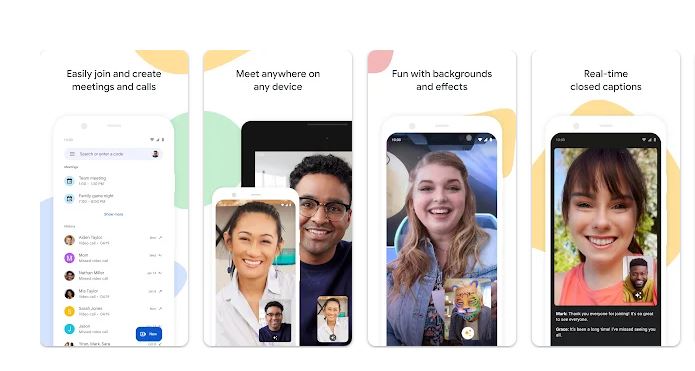Google Meet is at the heart of the revolution that has made joining a video conference as easy as sending a text. Whether it’s a high-stakes business conference or a family chat, anyone can join a meeting by just going to https://meet.google.com and entering a code. This link serves as a digital doorway that allows for immediate collaboration and is frequently shared via calendar invites, messaging apps, or email.
Remote collaboration tools went from being useful to being vital during the pandemic. In particular, Google Meet changed quickly to stay up. For both new and seasoned users, the experience has significantly improved thanks to frequent updates and integration with other Google services like Gmail and Calendar. Google Meet has evolved into a virtual meeting space that replicates an actual office setting, going beyond simple video conferencing.
| Feature | Description |
|---|---|
| Platform | Google Meet (https://meet.google.com) |
| Accessibility | Available on web, Android, and iOS |
| Meeting Duration | Free version: up to 60 minutes per session |
| Participants | Up to 100 participants (free version) |
| Integration | Gmail, Calendar, Docs, Slides |
| Real-Time Captions | Supports 70+ languages |
| Premium Features | Noise cancellation, meeting recording |
| Fun Elements | Background effects, emojis, visual sharing |
| Join Without Account | Yes, with approval from the meeting host |
| Security | Encrypted video, abuse flag system |
Google Meet has proven to be incredibly successful for both teachers and students. Teachers can create safe, closed-session environments that mimic the layout of a real classroom by integrating Google Classroom. This helped students stay connected and keep learning on track, especially during lockdowns. Google created a trusted environment by working with school administrators to make sure Meet complied with child privacy laws.
The performance of the application has been enhanced for use while on the go through strategic collaborations with mobile developers. Now, a student can easily attend class or go over group project notes while commuting in the morning. Its portability, coupled with its clear user interface and economical battery life, has made it a popular choice for purposes other than work. It’s equally useful for informal get-togethers and long-distance family calls.

Features like AI-based noise reduction and translated captions have evolved into more than just technical marvels in recent updates; they are now lifelines. It’s not necessary for a mother to mute every second while taking care of her toddler and working from home. The call is incredibly clear thanks to the system’s clever reduction of background noise. These updates are specifically designed to solve communication challenges in the real world.
Meet distinguishes itself by natively integrating with both iOS and Android. The shift from desktop to mobile is still very seamless. For instance, on the way to a studio, a designer may start presenting slides on a laptop and transition to phone audio. Like a digital assistant subtly modifying your workstation, the platform adjusts with grace.
Communication tools have drastically changed relationships, teams, and even political movements over the last ten years. Meet has joined that story as a trusted companion rather than as a disruptor. Its dependability has won users over, especially in times of crisis. Its use increased by more than 30 times in a matter of weeks during the height of the pandemic, demonstrating the importance of having the appropriate tool when people’s lives are physically separated.
It’s also important to note how Google Meet is changing our perception of productivity. Meetings become more action-oriented with the use of synchronized tools like Docs, Sheets, and Calendar. Users are working together on-screen in real time, sharing links, screens, and tasks without pausing, rather than discussing them.
Google Meet provides a particularly cutting-edge feature for creative teams: background customization and visual filters. These effects enhance comfort and individuality in otherwise formal sessions; they are not merely tricks. With a brand-themed backdrop, a marketing manager in Paris can showcase quarterly visuals while letting others concentrate on their expressions and message.
Security is still crucial. Permission needs to be given to users who are dialing in without a Google Account. Repeat offenders are flagged by abuse-reporting systems. Private metadata is protected, and every meeting link is encrypted. This focus on digital trust is essential, especially as the platform becomes more popular in the public and private sectors.
We can anticipate that Google Meet will continue to develop in the upcoming years. Consider interactive whiteboards, AI-powered note-taking, or even voice-activated accessibility tools. These developments are not only possible, but also unavoidable if the last five years of development are any guide.
For now, all it takes is going to https://meet.google.com and selecting “Join” to begin the process. That one link is your bridge, whether you’re planning a boardroom meeting or reconnecting with old friends who live in different cities.
For millions of people, Meet has become more than just a product thanks to Google’s emphasis on collaboration, security, and fluidity. Interestingly, it keeps improving with every update.



